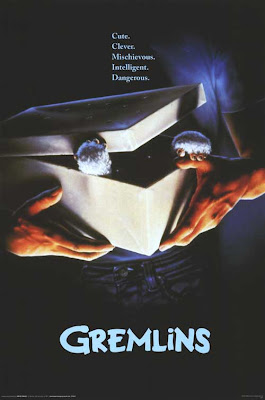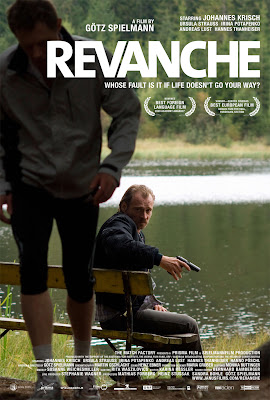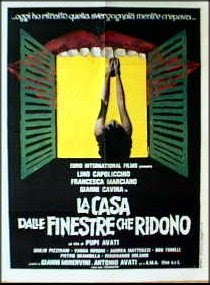(2008) Written and directed by J.T. Petty; Starring: Clancy Brown, David Busse, William Mapother, Karl Geary and Sean Patrick Thomas
Available on DVD and Netflix Streaming
Rating: ***
Writer/director J.T. Petty’s horror/western hybrid The Burrowers ran the film festival circuit, but never had a proper theatrical release, eventually ending up on home video. The film’s mixed reviews and direct-to-video pedigree didn’t bode particularly well, but I was intrigued enough by its premise to give it a chance. Although The Burrowers doesn’t entirely triumph over its b-movie origins, it’s a modestly successful mixed-genre effort, thanks to the relatively novel setting and inventive creature designs.
The Burrowers is set in the Dakota Territories, circa 1879. A family of settlers is viciously attacked by unseen assailants in the opening nighttime scene and the members are abducted, setting the stage for an exhaustive search by a posse led by John Clay (Clancy Brown). The local indigenous population is blamed for the disappearance, despite the absence of proof. He’s joined by Irish immigrant Fergus Coffey (Karl Geary), who’s determined to find out what happened to his sweetheart, who vanished, along with her family. Former slave Walnut Callaghan (Sean Patrick Thomas) accompanies Coffey on his quest.

Clay’s posse encounters an army troop, led by sadistic officer Henry Victor (played with sneering aplomb by Doug Hutchison). After a lone Native American scout is captured, Victor has him tortured to find out what information he possesses about the missing settlers. We soon discover that the scout knows more than he’s telling, but it’s not what anyone’s expecting. As the search drags on for the missing settlers and more people go missing, the situation become increasingly desperate and futile.
Strange sounds herald the approach of creatures in the darkness. We only see brief flashes of the eponymous burrowers at first, but when we eventually get a better look their appearance does not disappoint. I don’t want to give away too much, but they seem suitably fearsome as predators, and credible as a subterranean species. The creatures inject a type of neurotoxin that paralyzes their victims. The victims are then presumably buried, left to waste away in the ground until their innards become soft enough for the burrowers to digest. We get hints about the burrowers’ origins and life cycle, but it’s clear that they’ve been around longer than humans. The Native Americans have established a tenuous co-existence with the creatures, but their relationship is disrupted by the encroachment of the white settlers.

The film was shot in Panavision, but the wide frames are offset by de-saturated color. It’s evident that Petty wasn’t looking to make a travelogue film with brilliantly hued vistas, but probably intended to capture the look of a faded photograph. The understated colors, however, have another unintended effect. In several scenes that involve copious amounts of blood spray, the reds are reduced to a dark brown.
The Burrowers is fairly thin in the dialogue department. Most of the characters have little to say, unless they’re providing exposition to complement the action that’s taking place. In fact, few of the characters truly stand out, except as rough, underdeveloped sketches. Everyone in the film can easily be described with one sentence or less. We just take it for granted that Coffey is tracking the whereabouts of his love interest due to great devotion, but their relationship is never fully established. There’s a brief, wordless scene when he and she exchange glances (and a pendant) but there are no words between them. The supporting characters fare even worse. Coffey’s companion, Walnut, was once a slave but we never hear much about his tortured past. Victor, the army officer, is little more than a racist caricature. None of the characters ever rise above their two-dimensional confines, making it difficult to become invested in their personal dilemmas. In the final summation, this lack of distinct characterization is what makes The Burrowers a merely adequate, rather than really good genre-bending horror film.

By the time the film screeches to a halt, we’ve probably learned more about the burrowers, themselves, than any of the humans. It’s frustrating to think about what could have been, rather than witnessing the finished product. The Burrowers could have been more than a “what if” exercise, if it had characters that you truly cared about (Compare this to the superior Tremors, which covered somewhat similar territory, but with much more interesting characters and wittier dialogue.). The Burrowers is a bit of an oddity – there haven’t been many horror westerns to compare to it. Taken in the right light, it works effectively enough. It’s still worth a look for its modified ”hunters and the hunted” theme, but we’re left with the feeling that the material could have been pushed farther.












































